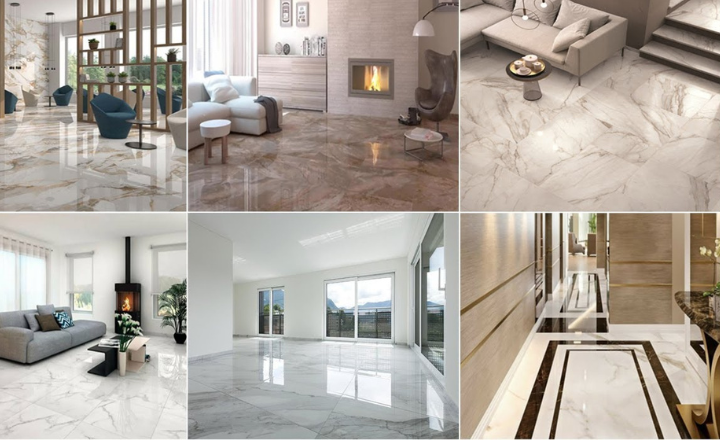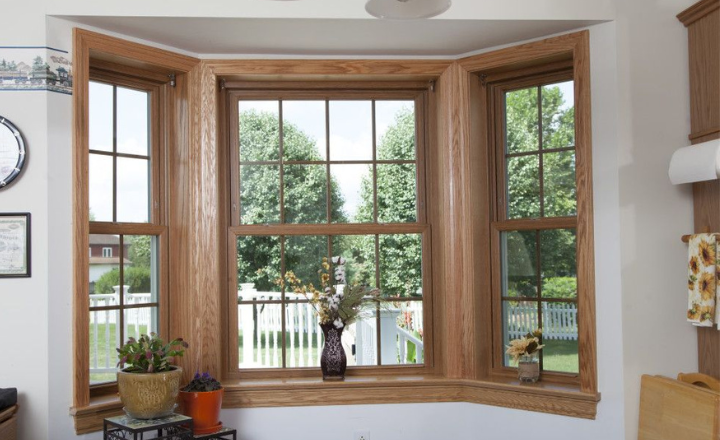Difference Between Ceramic Tiles and Vitrified Tiles

When picking the best sort of tile, understanding the difference between ceramic tiles and vitrified tiles is crucial. This article will break down their unique characteristics, benefits, and ideal uses, guiding you through the decision-making process.
It will guide you through the key differences, helping you make an informed decision for your flooring or wall needs. By the end, you’ll be equipped with the knowledge to choose the perfect tile that matches both your style and functionality requirements.
Composition and Manufacturing Process
Did you know that the humble ceramic tile, often taken for granted in our homes, is crafted from a precise blend of clay and water? Understanding the composition and manufacturing process behind these tiles not only reveals the artistry involved but also highlights their crucial role in creating durable surfaces in our everyday lives.
In this article, we’ll delve into how ceramic tiles are shaped, molded, and baked in a kiln to remove any moisture, ultimately transforming them into hard, resilient surfaces that stand the test of time.
The stunning vitrified tiles underfoot are crafted from a unique blend of materials that includes silica, clay, quartz, and feldspar. Understanding the composition and manufacturing process of these tiles not only reveals the science behind their durability but also highlights why they have become a popular choice for homeowners and builders alike.
we will go through intricate steps involved in creating these tiles—from crushing the raw materials to firing them at extreme temperatures—so you can appreciate the craftsmanship that goes into every piece.
Porosity and Absorption Rate
The porosity and absorption rate of tiles play a vital role in this aspect, especially when comparing ceramic tiles with their vitrified counterparts. With ceramic tiles being more porous and prone to water absorption, they are at a greater risk of water damage and staining. In this article, we will break down these key differences, equipping you with the knowledge to choose the right tile for your space while minimizing future repair costs.

Stepping into a beautifully tiled bathroom, I found that the tiles had succumbed to moisture damage over time. The key to avoiding such disasters lies in understanding porosity and absorption rates, especially in vitrified tiles known for their low porosity. The difference between ceramic and tiles offers natural resistance against water and humidity, making them perfect for high-moisture areas. Join us as we uncover the significance of porosity in tile selection, equipping you with the knowledge to choose materials that stand the test of time.
Strength and Durability
Difference between Ceramic and vitrified tile is present significantly in terms of strength and durability. When comparing ceramic tiles and vitrified tiles, strength and durability emerge as critical differentiators that influence their suitability for various applications.
Ceramic tiles, while aesthetically pleasing and available in a myriad of designs, often have a porous surface that can make them more susceptible to staining and damage over time. Their inherent fragility means they may not withstand heavy foot traffic or impact as effectively as their vitrified counterparts. However, this does not diminish their charm; they can be an excellent choice for low-traffic areas where design takes precedence.

On the other hand, vitrified tiles are engineered for superior strength and durability. Composed of a mixture of clay, quartz, and feldspar, these tiles undergo a high-temperature firing process that enhances their resistance to moisture and stains.
This makes them ideal for high-traffic areas such as commercial spaces or busy households. Moreover, their low porosity means they require minimal maintenance, maintaining their pristine appearance for years. In essence, while both options have their unique appeal, choosing between ceramic and vitrified tiles ultimately hinges on balancing aesthetic desires with practical requirements for strength and durability.
Surface Finish and Appearance
The surface finish of vitrified and ceramic tiles plays a pivotal role not only in aesthetic appeal but also in functionality. Vitrified tiles, known for their low porosity and durability, can be finished with various textures that create stunning visual effects while enhancing slip resistance. Imagine a sleek, polished surface reflecting light beautifully in a modern living space, or a matte finish that adds warmth and sophistication to a rustic kitchen.
The choice of finish can completely transform the ambiance, making it essential for designers and homeowners alike to consider how these surfaces interact with light and texture.
On the other hand, ceramic tiles offer an incredible palette of colors and patterns, allowing for endless customization. Their surface finishes can range from glossy glazes that amplify vibrancy to earthy, unglazed options that bring out natural beauty.
With innovations in printing technology, ceramic tiles can now mimic materials like wood or stone, giving spaces an authentic feel without compromising on maintenance. Ultimately, the interplay between surface finish and appearance not only elevates design aesthetics but also shapes the tactile experience of a space, inviting touch and interaction in ways that go beyond mere visuals.
Cost Considerations of ceramic and vitrified tiles
Cost considerations play a significant role in choosing between these two tile types. While vitrified tiles may come with a higher upfront cost due to their intricate manufacturing process, the long-term savings on maintenance and replacement can justify the investment. Additionally, the eco-friendliness of both options cannot be overlooked.

ceramic tiles utilize fewer resources in their production, often incorporating recycled materials, which appeals to environmentally conscious consumers. By understanding the nuances of these tiles, you can make informed decisions that align with both your aesthetic desires and practical needs.
Conclusion
In conclusion, both ceramic and vitrified tiles offer unique advantages that cater to different needs and preferences. While they share similarities in durability and versatility, their differences in water absorption, cost, and appearance can significantly influence your choice. vitrified tiles are an ideal choice for contemporary and modern spaces.
It’s essential to consider factors such as your budget and aesthetic preferences when making a decision. Whether you prioritize a stylish look or long-lasting performance, understanding these key aspects will help you select the right tile for your small home decor. Take the time to evaluate your options carefully and choose the tile that best suits your vision and requirements.
FAQ
1. What are ceramic tiles made of?
Ceramic tiles are made from a mixture of clay and other natural materials, which are fired at high temperatures to create a durable surface.
2. What distinguishes vitrified tiles from ceramic tiles?
Vitrified tiles are made from a refined clay mixture that includes silica, quartz, and feldspar, which is then fired at higher temperatures, making them denser and less porous than ceramic tiles.
3. Are vitrified tiles more water-resistant than ceramic tiles?
Yes, vitrified tiles have a lower water absorption rate due to their dense composition, making them more water-resistant compared to standard ceramic tiles.
4. Can both types of tiles be used outdoors?
While ceramic tiles can be used outdoors, vitrified tiles are generally preferred for outdoor applications due to their superior strength and lower porosity.
5. How do the costs compare between ceramic and vitrified tiles?
Generally, ceramic tiles are less expensive than vitrified tiles, as the latter involves more advanced manufacturing processes and materials.
6. Which type of tile is better for high-traffic areas?
Vitrified tiles are better suited for high-traffic areas due to their durability and resistance to scratches and stains compared to ceramic tiles.
7. Do both types of tiles come in various designs?
Yes, both ceramic and vitrified tiles come in a wide range of designs, colors, and finishes, allowing for versatile interior design options.
8. How do maintenance requirements differ between the two?
Vitrified tiles typically require less maintenance due to their stain resistance and easy cleaning properties, while ceramic tiles may need more attention to prevent staining and wear over time.







